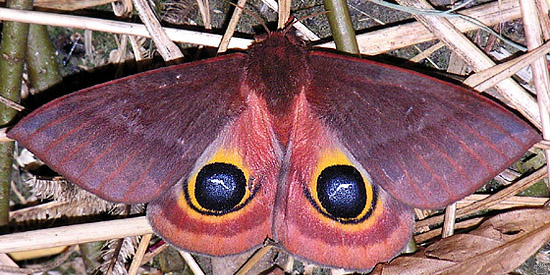
Io moth (Automeris io), Everglades National Park. |
Florida, part 26: Moths
As night falls on Florida, millions of moths emerge from their daytime hiding places. There is more than a thousand species here, but only about a hundred are large enough to attract any human attention - unless they are agricultural pests.
 |
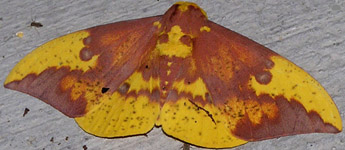 |
| Imperial moth (Eacles imperialis), Big Cypress National Preserve. |
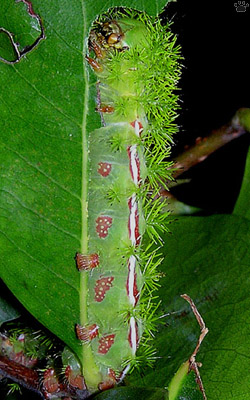
Io moth caterpillar, Coral Gables. |
The largest and most striking are wild silk moths (Saturniidae). Each of them has its own flying season. In Florida, many species only show up in late fall, others emerge in summer. Probably the most common is Io moth. Its caterpillars can even be found on city streets. I tried to raise them a few times, but all happened to be infected with parasitic flies or wasps. They would become discolored (right) and die a horrible death, being eaten alive from the inside. |
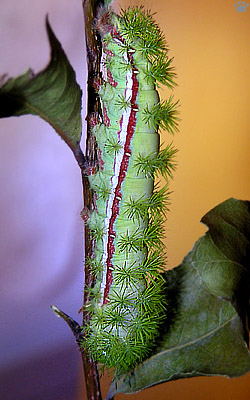
Io moth caterpillar infected with parasites, CG. |
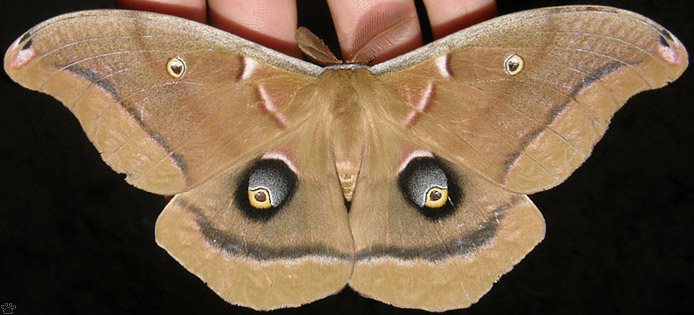
Polyphemus moth (Antheraea polyphemus), Highlands Hammock State Park. |
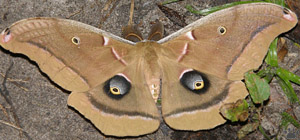
Polyphemus moth, HHSP. |
Polythemus moth is a giant. Its caterpillars feed on oak and maple leaves. |
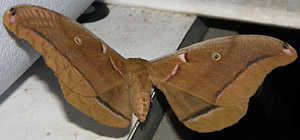
Polyphemus moth, HHSP. |
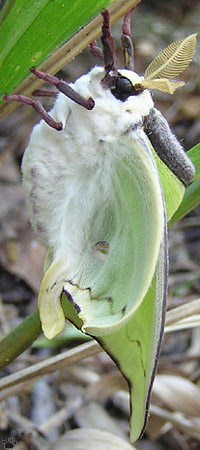 |
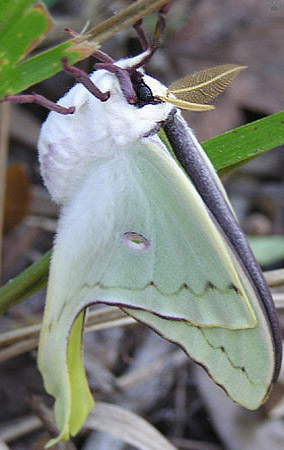 |
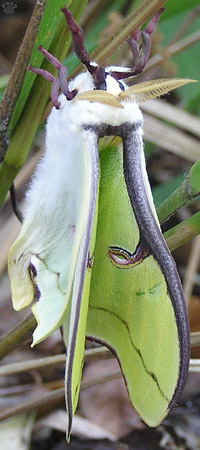 |
| Luna moth (Actias luna) spreading its wings after hatching, HHSP. |
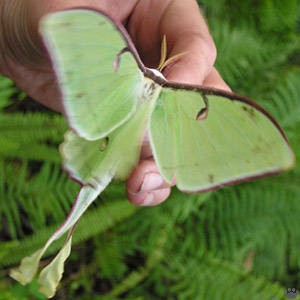
Luna moth, HHSP. |
Luna moth feeds on non- tropical hardwood trees, so it is very local in southern Florida. Like many North American silk moth, it has close relatives in eastern Asia. |
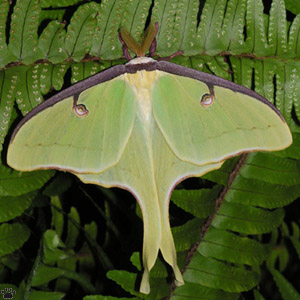
Luna moth, HHSP. |
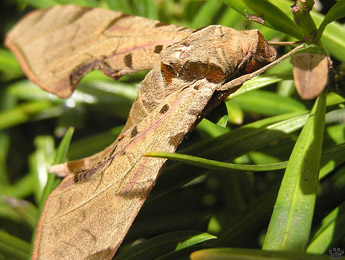 |
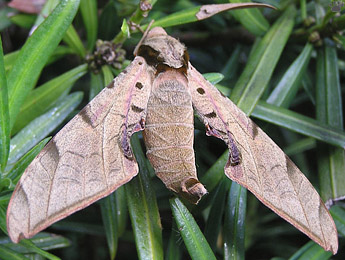 |
| Streaked sphinx (Protambulyx strigilis), Coral Gables. |
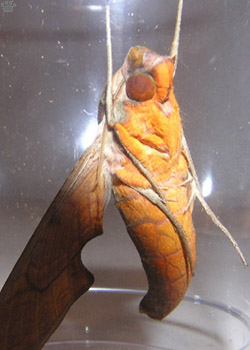
Streaked sphinx, CG. |
Hawk moths are better fliers, so many southern Florida species have colonized it from the West Indies - like this large tropical moth called streaked sphinx which I rescued from a window of our department building. |
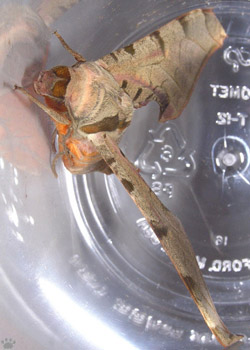
Streaked sphinx, CG. | 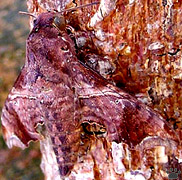
Mournful sphinx (Enyo lugubris), ENP. |
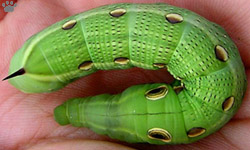
Caterpillar of tersa sphinx (Xylophanes tersa), BCNP. |
Like many moths, hawk moths often have exquisitely beautiful caterpillars. But some caterpillars of tiger moths (Arctiidae) are even more gorgeous. |
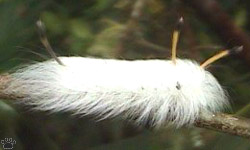
Spotted apatelodes (Apatelodes torrefacta) caterpillar, ONF. |
 |
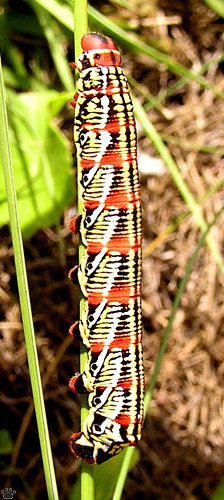 |
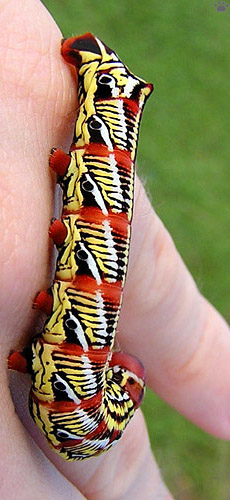 |
| Caterpillar of banded sphinx (Eumorpha fasciatus), Tosohatchee State Reserve. |

Caterpillar of polka-dot wasp moth (Syntomeida epilias), ONF. |
One of these two tiger moth caterpillars (left) belongs to the moth at the bottom of the page. |
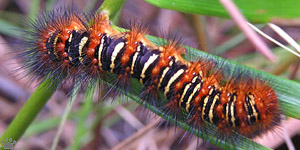
Caterpillar of echo moth (Seirarctia echo), Fern Forest Nature Center. |
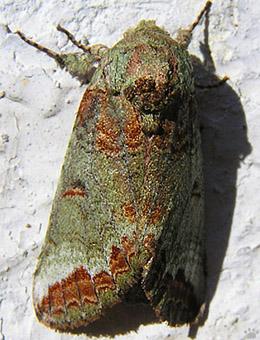
Astarte prominent moth (Heterocampa astarte),
Wekiwa Springs State Park. |
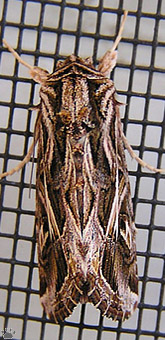
Sweetpotato armyworm moth
(Spodoptera dolichos), CG. |
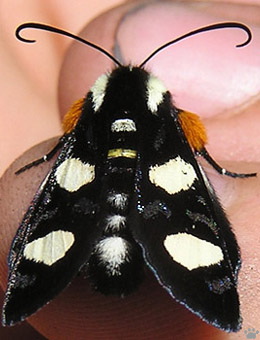
Eight-spotted forester (Alypia octomaculata),
HHSP. |

Bella moth (Utethesia ornatrix), BCNP. |
Small moths usually go unnoticed, but many of them are very beautiful, too. Tiny bella moth (sometimes called rattlebox moth) is very common in southern Florida, especially along woodland edges. Its caterpillars feed on plants of Pea family. |
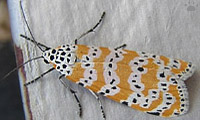
Bella moth, ENP. |
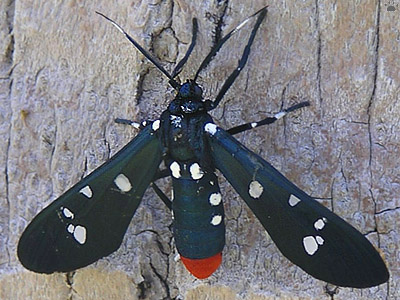
Polka-dot wasp moth, ONF. |
Part 27. Other Insects
Back to Part 25
Home
|






























